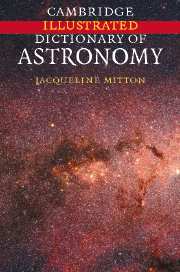Summary
aberration An effect that makes the observed position of a star slightly different from its true position. It results from a combination of the finite speed of the starlight and the motion through space of the observer on Earth. Most aberration is due to Earth's yearly motion in orbit around the Sun and is called annual aberration. A much smaller contribution from Earth's daily rotation is called diurnal aberration.
absolute magnitude A number that gives the true, relative brightness of an astronomical body, ignoring the dimming effect of distance. The absolute magnitude of a star is the ➤ magnitude it would appear to be if it were 10 ➤ parsecs away. The absolute magnitude of a planet, asteroid or comet is the ➤ apparent magnitude it would have if it were at a distance of 1 AU from both the Sun and Earth, with its disk fully illuminated.
absolute zero The lowest possible temperature. It is the zero point of the Kelvin temperature scale used in science. Its equivalent on the Celsius scale is −273.16°C.
absorption line A sharp dip in a continuous ➤ spectrum. Absorption lines look like narrow gaps in a spectrum. They are seen in the spectra of the majority of stars. In the case of the Sun, they are known as ➤ Fraunhofer lines.
Atoms create these dark lines by absorbing radiation. Each chemical element creates a unique pattern of lines. By measuring the strengths of absorption lines it is possible to deduce the abundance of the various elements, though the lines are also affected by temperature, density and other factors.
- Type
- Chapter
- Information
- Cambridge Illustrated Dictionary of Astronomy , pp. 1 - 31Publisher: Cambridge University PressPrint publication year: 2007



